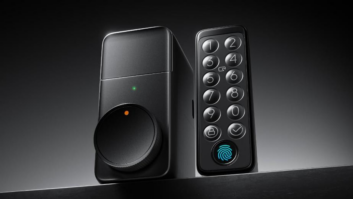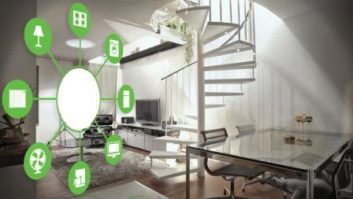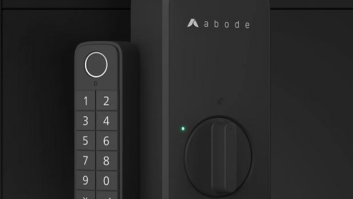It’s easier to lay wires and install some of a networked home’s components before the walls go up, but it can be more profitable for installers to do it after the fact.
For this reason, some custom installers are marching out of step with most of their counterparts, who focus almost exclusively on the new-home market.
Industrywide, installations in new construction far outnumber their retrofit cousins, according to CEDIA member surveys going back five years. On average, member companies reported that 59-64 percent of their custom installs during those years were performed in new construction, with retrofits accounting for 20-24 percent, and remodels accounting for 13-17 percent.
Retrofits “are much more profitable” because they always take less time, said Steve Hayes, president of Custom Electronics in Falmouth, Maine. About 25 percent of his company’s business is in retrofits, which he defines broadly to include remodeling jobs in which “the walls are coming down.”
Bill Skaer, president of Eric Grundelman in Mesquite, Texas, defines retrofits more narrowly. He excludes remodeling jobs, and despite that exclusion said he does more than 50 percent of his business in retrofit installs.
With more than 20 years under his belt, Skaer prefers retrofits for the higher tickets they command. He also likes the challenge. “Retrofits are a little more challenging,” he said. “You have to have an excellent working knowledge of how a house is built.”
Another retrofit advantage is efficiency, said Hayes. A retrofit can often be done in a day, he said, whereas new home jobs can take up to two years because they require hand-in-hand coordination with general contractors and multiple trips to a construction site during different building stages.
Another reason some installers favor retrofits is they are always in demand. “Retrofits always seem to be taking place, especially in good economic times,” said Bill Anderson, president of Genesis Audio in Irvine, Calif. He has also been doing retrofits for 20 years, and about 60 percent of his company’s business is in retrofits. About 10 percent is in remodels, and 30 percent is in new homes.
The challenge in retrofits is in the unknowns that can lead to difficulties, such as discovering a fireplace in the wall of an old brownstone halfway into a job. “When you find a fireplace, you add another eight weeks while they get a mason in there,” Hayes said.
The more experienced a custom installer is, however, the fewer unknowns they will encounter. “You can make some pretty safe assumptions,” Skaer said, referring to certain architectural trends.
Some building features, Hayes explained, can be assumed based on geography. For example, houses in the Southeast often lack attics and basements; old buildings in the Northeast often have add-on construction on top of add-on construction; and Midwest homes are usually straightforward stick constructions.
The potential challenges require installers to carry a decent bag of tricks-and a few special tools.
Anderson reviews blueprints that reveal a lot about a structure, recommends stud finders to prevent unnecessary damage, and turns to extended drill bits that can drill into walls sideways in tight circumstances.
To see and do work inside a wall, Skaer uses a combination of three holes in a top-plate (one for a flashlight, one to look through, and one for the drill). As a “very last resort,” the company uses wireless products to get through such obstacles as cement walls or floors. In general, “there are a lot of different ways to get the wires around,” he said.
Most retrofit jobs, however, are for home audio and video, the installers said. Seventy percent of Grundelman’s projects are for A/V because “entertainment is still by far the biggest draw for electronics in the home,” Skaer said. However, the company also installs telephone systems, telecoms, gate controls, lighting controls, security cameras and local area networks for home PCs.
“Home theater has reached an all-time high in terms of contagion. It’s a sought-after amenity,” Anderson said. Nonetheless, Genesis Audio is also finding demand for home lighting controls and shared broadband-modem access.
Even within the retrofit community, there are different philosophies as to why homeowners choose retrofits. “Lots of people like their houses and would rather fix them up than start all over,” Anderson pointed out.
But the big volume, for now, is in the new-construction market, Hayes and others agreed. With uninterrupted economic growth during most of the 1990s, the demand for new homes-and subsequently, new networked homes-is very strong, said Hayes. He pointed to one client who bought a $5 million house in Hawaii, planned to do a full retrofit, but then opted to demolish the house and rebuild it altogether.
“You have to look at the economy,” he said. “When the economy heads South, we’ll see a lot more retrofits.”













